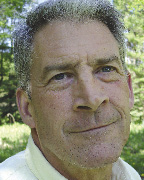The application of Rigid Foam Insulation on the exterior of buildings has been going on for several years. Starting in Canada in the 1960s and then north to Alaska, it has migrated south across the border into New England and the upper Midwest. Called Remote in Alaska or Persist in Canada, it is now being referred to as Outsulation in Wisconsin! No matter what the name, it is an excellent method of increasing the insulation value of the building envelope at the same time improving air-sealing and eliminating the thermal bridging. Depending upon the thickness of the foam, it can also shift the dew point to the outside of the building envelope which will eliminate moisture and mold problems.
New England is fortunate in having the foremost authority on this technique, Dr. Joseph Lstiburek of Building Science Corp. (BSC), in Somerville, Mass. Over the last several years, Dr. Lstiburek and his colleagues at BSC have been developing, testing and refining this effective insulation technique here and around the country in conjunction with the U.S. Department of Energy and various building material manufacturers.
The exterior application of rigid foam saves time, effort and money over more traditional methods of insulating buildings from the inside. By insulating the exterior of the envelope, insulating the wall cavities can be eliminated unless needed for sound abatement, such as evidenced in the Dartmouth College Life Sciences Center, a LEED project, built with 4 inch nail base over an adhesive weather resistant barrier that was applied to gypsum sheathing attached to metal framing studs. Openings are the greatest challenge but easy enough to do. The biggest current challenge is how to use this procedure effectively with concrete, CMU, brick and stone buildings. How to ensure the insulation and cladding stays effectively secured to the building is the next hurdle being worked on.
As New England's energy costs continue to climb, this insulation method will become more economical as the payback period reduces in proportion to rising energy prices. I, for one, do not see our energy prices going anywhere but up in the future. The time, effort and money spent on this application now, will save much more in the future in reduced energy use.
Brice Hereford, CSD, is a code compliance specialist with FastenMaster, Agawam, Mass.
Tags:







